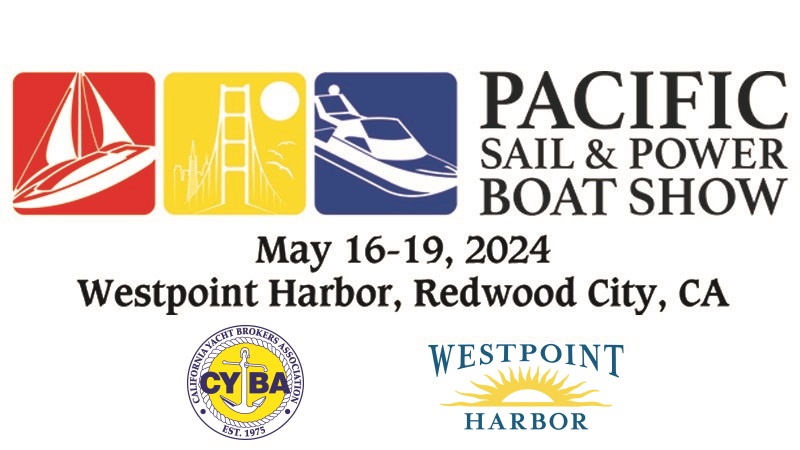
Sailing Into the Sunset With Friday Night Beer Can Racing
If the Golden Gate Bridge hadn’t been clearly in view, you might have thought we were all sailing in the Oakland Estuary. Friday night’s pre-start for the Corinthian Beer Cans saw most sailors in short sleeves as the usual chill swooping down from the fog resting on top of Sausalito was absent on this warm, clear, fog-free evening.
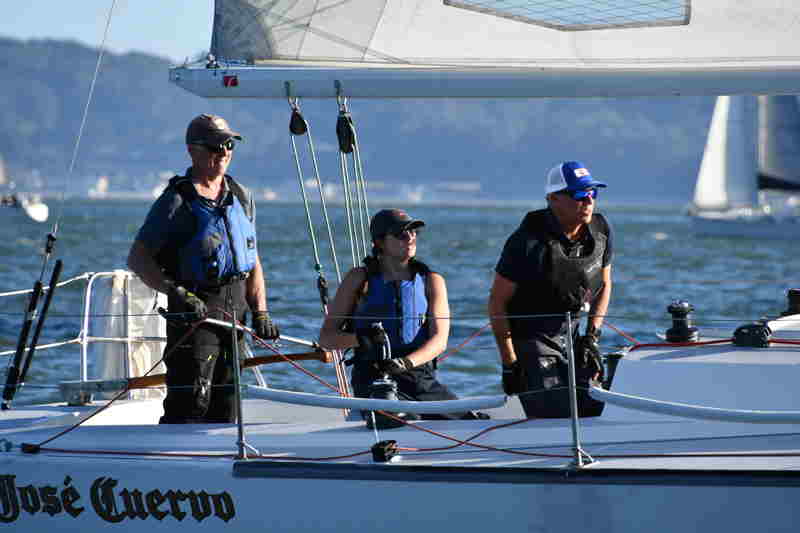
With a light breeze, the race committee set a short course, giving a time limit of 15 minutes after the 8:15 sunset. It’s these late-sunset summer evenings that beer can racing is made for, and the fleet was once again rewarded for finishing the week with a sail on the Bay. Besides the Matthew Turner, those signed up for the Friday night races were just about the only boats out there enjoying the near-perfect evening.
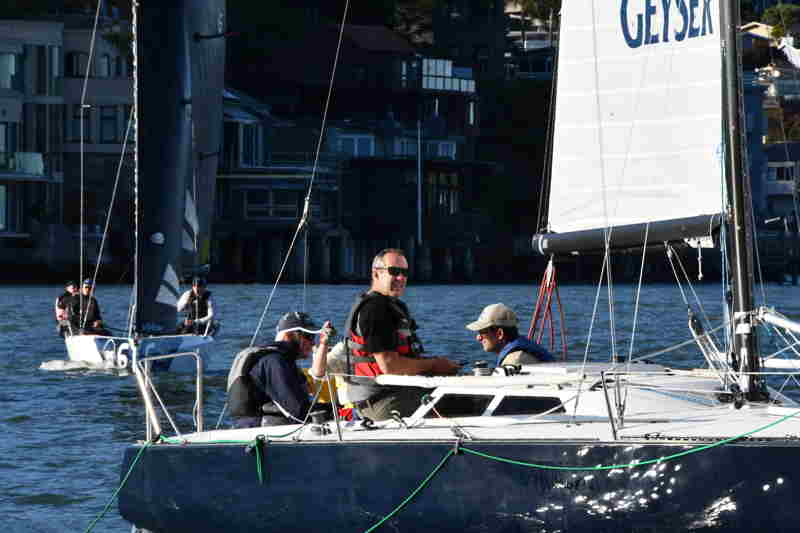
Just about everywhere we looked it was short sleeves on deck before the start. There was just enough breeze to keep boats moving out to the ebb, which carried us all toward our weather marks.
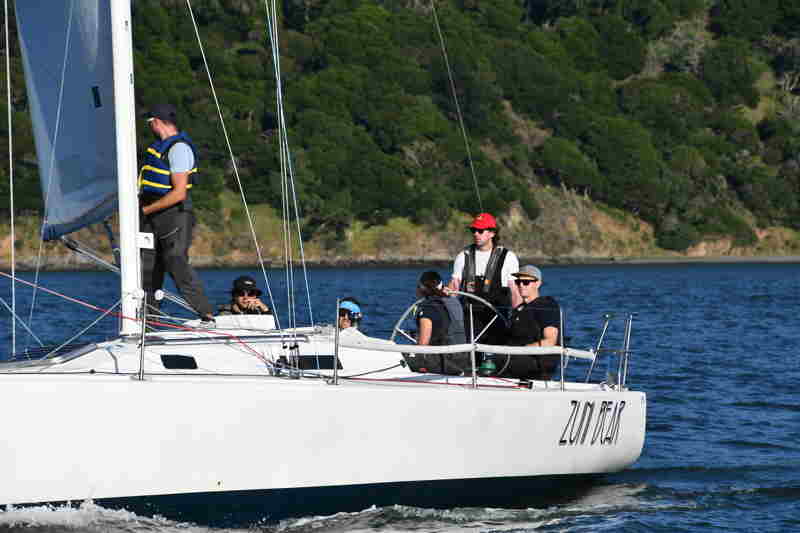
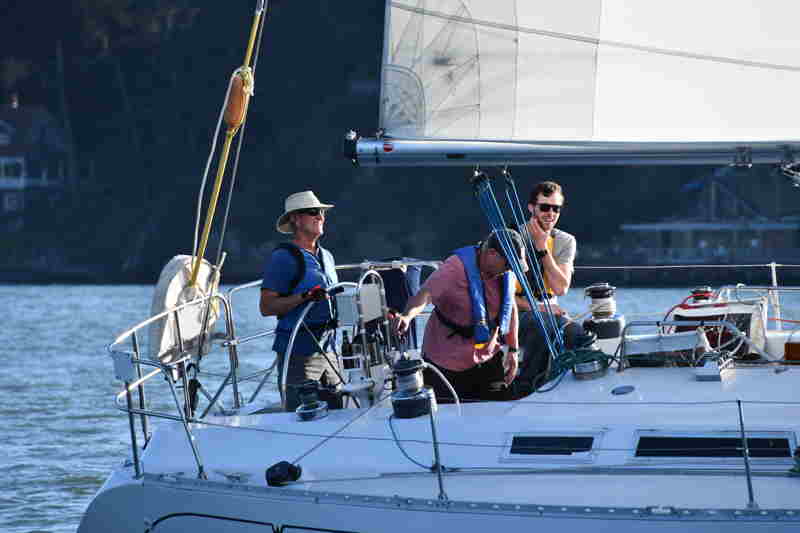
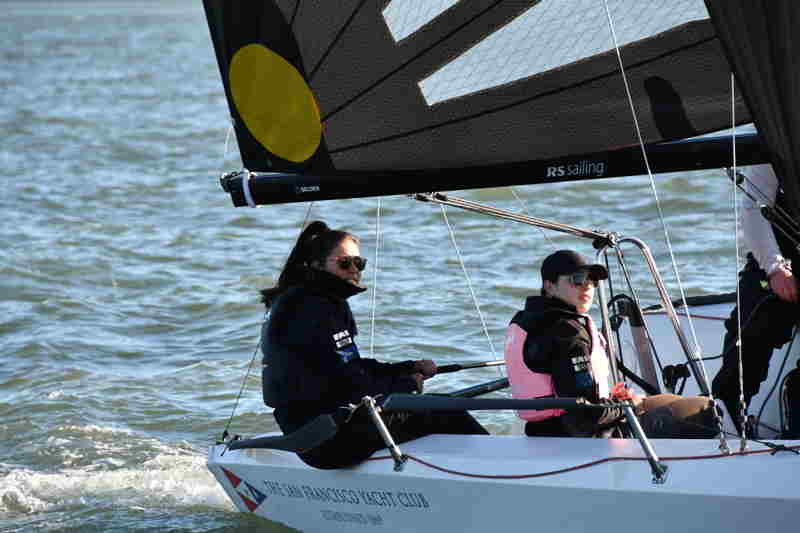
Once out on the Bay there was a nice breeze that got crew moving from the leeward rail to the better views afforded from the windward rail. The combined ebb and breeze made for a few quick tacks before the windward mark was reached and everything and everyone eased up.
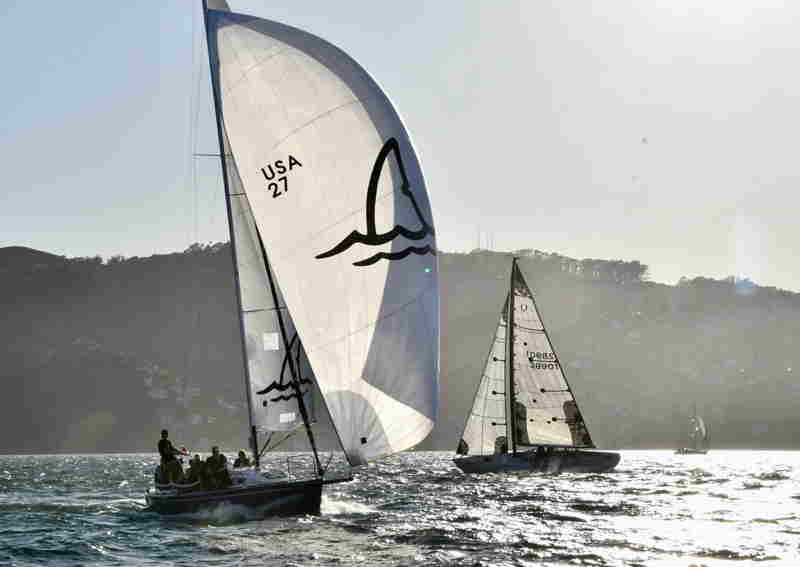
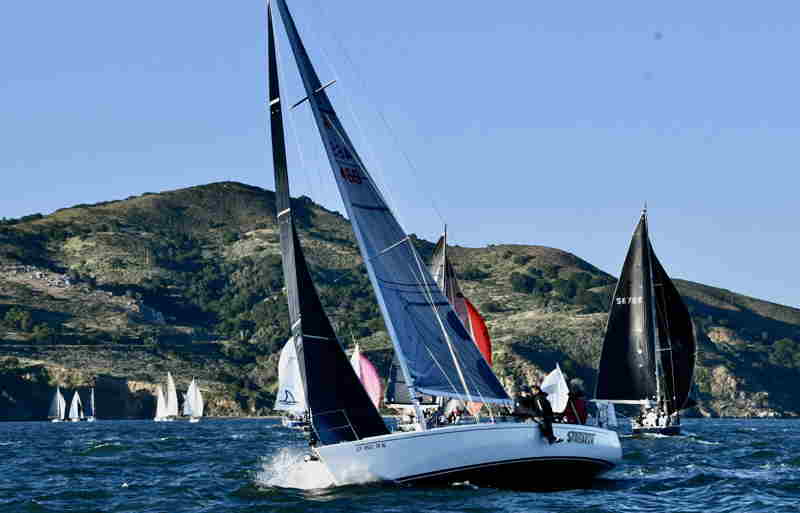
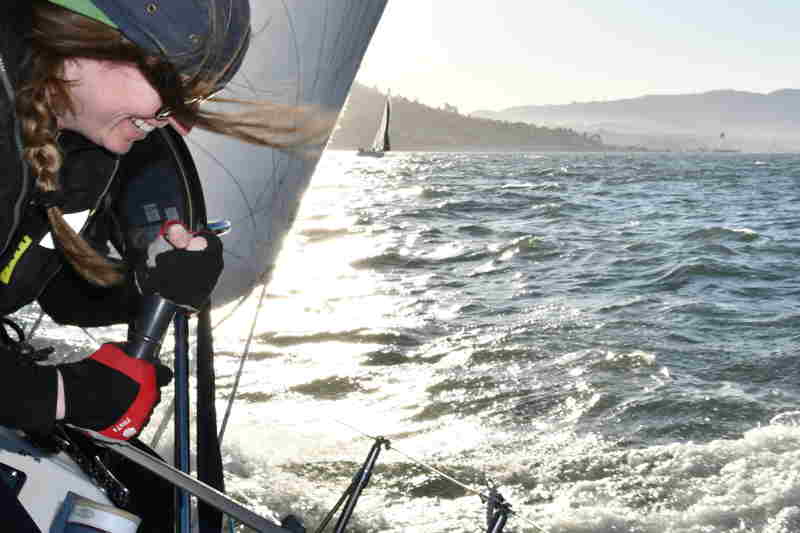
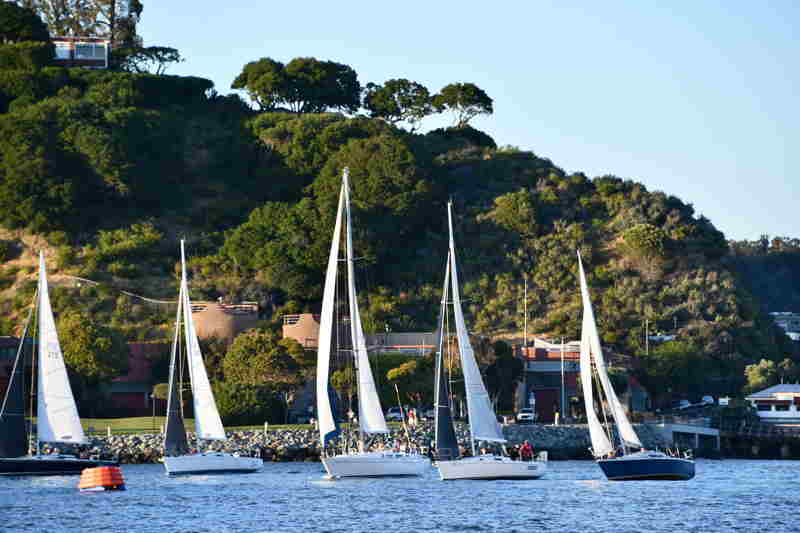
With the help of fleet leaders pointing out wind holes and adverse currents, we were able to find the right combo of better breeze and less current and pull a rabbit out of our hat to lead at the finish. As all racers know, “It ain’t over until it’s over,” and the intricate wind and current patterns on the Bay leave you with hope when there should be none, and fear when you might think of relaxing. Rarely is a lead safe, or being deep in the pack a lost cause when conditions vary wildly across a narrow course.
Regardless of finishes, there’s nowhere else we’d rather be than on the Bay, starting the weekend with a sail. The time limit for the course will allow more sailing every evening until Summer Sailstice weekend, when the sun sets on the Bay at 8:35 and the course time limit moves to 8:50 p.m.
We look forward to seeing you out there.
Want to make a friend smile? Give them a gift subscription to Latitude 38.
Sunday Brings a Port of Oakland Fire
Sunday afternoon sailors on the Oakland Estuary had an otherwise beautiful day of sailing marred by a serious-looking fire that broke out in the Port of Oakland. Reader Jeff Berman sent in the shot below, taken about 3 p.m. on Sunday, while sailing aboard his Tartan 4000 Maverick. The billowing black smoke was rising from near the shipping containers in the Port of Oakland.
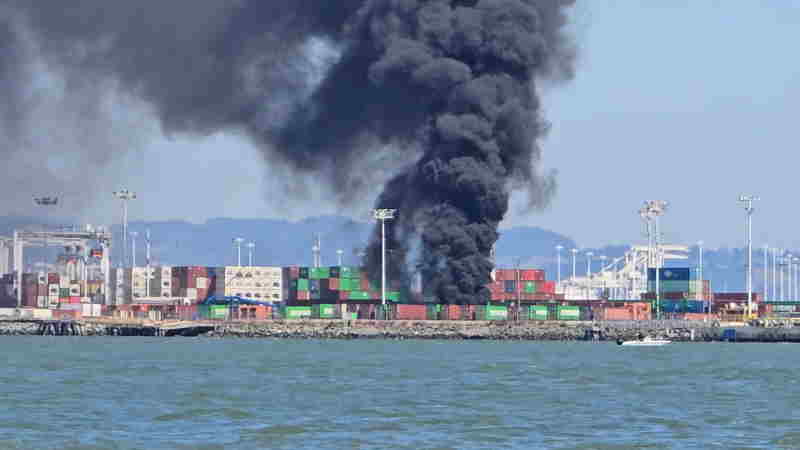
While there was lots of dark smoke, the San Jose Mercury News reports that it was a relatively small fire from lithium batteries that was brought under control quickly, without damage to neighboring structures. While there was the usual good breeze on the Central Bay, the smoke by the Estuary was rising straight up, providing anyone racing insights into the conditions ahead. Prepare to set your sails accordingly.
Pacific Sail & Power Boat Show returns to Westpoint Harbor May 16-19
Pacific Sail & Power Boat Show returns to Westpoint Harbor May 16-19. Come see the latest in power and sailboats, along with informative seminars and your favorite West Coast marine vendors. We will be there, will you? Tickets & info: www.pacificboatshow.com
Everything at Once — Redwood High Tops Northern League
It’s like this. The highest-ranking high school sailing team in Northern California is not recognized by the school. That won’t keep us from congratulating the sailors from Redwood High who won the Northern League Championship in April, but it might leave open the question of where to put the trophy. It might also leave us with surprised readers if we tell you that’s not at all unheard-of.
But there’s good news. Eighteen schools were represented at the NorCals, whether they knew it or not. A historic trophy, repurposed, was on the line for the first time, with the sweetener for the winners of a foundation-sponsored trip to a regatta in Annapolis. Both prizes were aimed at pumping energy into the scene.
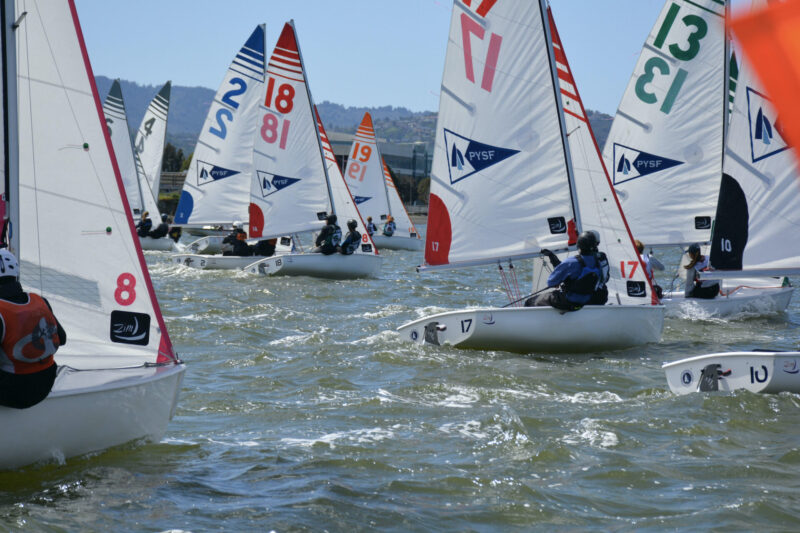
The Peninsula Youth Sailing Foundation, Redwood City, hosted two days of racing, with 24 races combined for A and B divisions. “PY” won a lot of love for providing a matched fleet of Flying Juniors — no trailering to this one — and keeping the rotations moving. Top boat was Redwood A, skippered by Morgan Headington and crewed by Henry Vare. They finished with six points in the bank over the Bay School’s Caleb (“We’re a young team”) Everett and crew Anna Rauh.
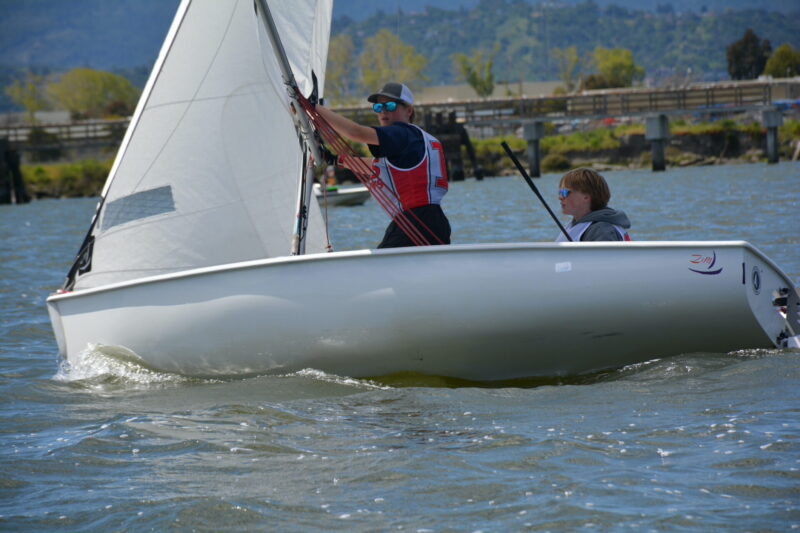
For the record, Redwood is located in Marin and ranked ninth in the Pacific Coast district, and Morgan and Henry most of the time would rather be wingfoiling. Because, for the record, FJs are not 21st-century fast. Their value lies on the chess-game side, as Morgan sums up: “FJs help me develop strategies for speed and distance to a starting line. But I feel the need for speed — unless I’m winning.” He’s got that going, and Henry is fully invested in crewing, for now. With Morgan about to graduate, Henry said, “… and Morgan being so talented, and because we’re both wingriders and we’re in sync, this is my opportunity to sponge everything I can.”
The San Francisco Yacht Club is home base for the Redwood team, which went after B division with a vengeance. Feva-class North American champion Rhett Krawitt took turns skippering with Mark Xu, and they topped B, while Encinal High’s Emi Puertas skippered the second-place boat. Redwood domination featured driver shifts plus crew shifts between Akira Bratti and Whitney Feagin, depending on the breeze, and it’s teamwork that keeps sailors devoted to this corner of the game. “Being part of a team is critical,” Rhett said. “You don’t always get that in club sailing.”
It might also be true that, in the teen years, the social aspect is (almost) everything.
Rhett, like his teammates, sailed Optis in his younger years, but he is alone in winning his first Opti regatta not long after “getting the bad guys out.” Back in the day, that was Rhett’s little-kid way of understanding the chemotherapy that saw a frail, wasting body through leukemia. Now he’s a robust survivor. Winning boat races is one way to keep Mom’s eyes misting over.
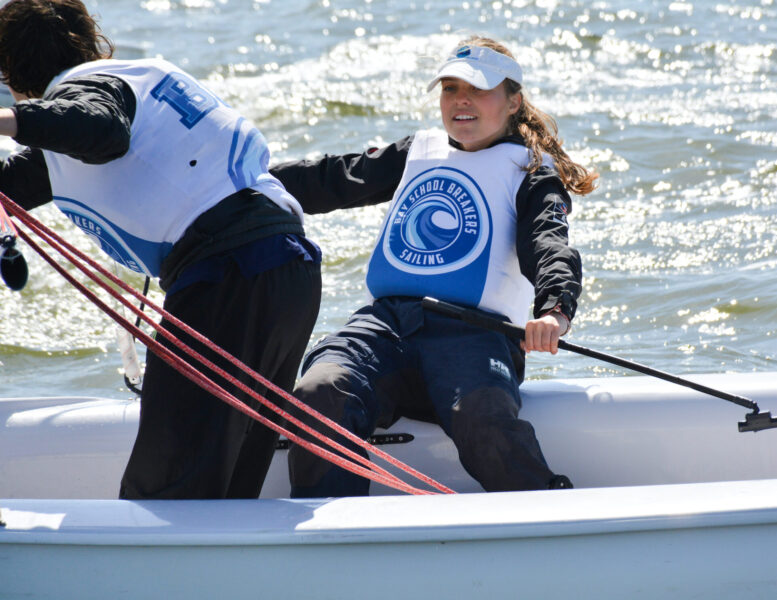
OK, the trophy: It began as the keeper for the 1981 California Cup, won in the Six Metre St. Francis VII by a crew of very young men, all of whom had been crack Laser sailors in their teens: John Bertrand, Paul Cayard, Craig Healy, Steve Jeppesen and Ken Keefe. Three out of five were Olympians-to-be, and five for five were world-class in any boat.
On a Mission to Make Racers Out of Cruisers Aboard Express 37s
New sailors sometimes take to the water with the idea of cruising around the Bay and its handful of small islands. And while there are a number of accessible locations, ideally the sailors will have a little experience under their keel. The Bay Area is not widely known for its “perfect” cruising grounds, but more so for its exciting racing conditions. The crew at Spinnaker Sailing in San Francisco recognized the new sailors’ dilemma and decided to do something about it. Spinnaker Sailing’s Cole and Miles Harper, and Gavin Corn from the Express 37 fleet, got together and formulated a plan to introduce sailing school graduates with bareboat-chartering experience to the fun sailboat-racing community on S.F. Bay and the exciting world of one-design racing.
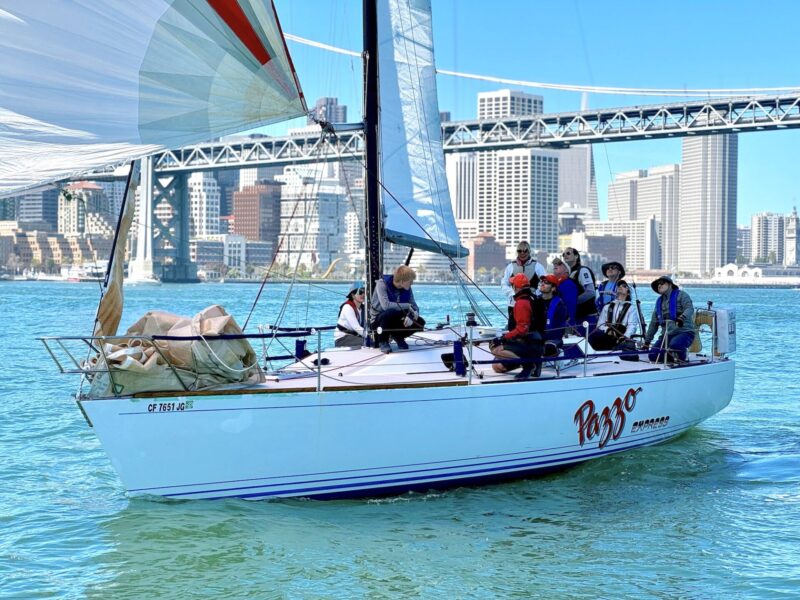
Spinnaker Sailing’s president Drew Harper says the Bay’s brisk winds and volume of commercial traffic affect the quality of the available anchorages. And, “Our most popular cruise-to locations are shoaling up a bit, Angel Island particularly.” Conversely, San Francisco Bay is “a racing mecca!”
Few spots in the US provide the winds and currents to make sailing as fulfilling as you find it here. The local YRA schedule has hundreds of regattas in dozens of one-design and handicapped classes, Drew says.
“The Express 37 is a solid one-design class survivor with an active fleet and a well-planned racing schedule. They are also the largest-sized one-design fleet on the Bay AND one of the few symmetrical spinnaker fleets,” Harper said. “Typically sailing with 9-10 crew, they are fast, durable, well built and tons of fun for all aboard.”
Spinnaker Sailing San Francisco graduates dozens of highly qualified sailors annually, many of whom would venture forth to cruising in the Bay. Giving these sailors a basic knowledge and a little experience of racing expands their ability to get out on the water and make the most of their new sailing skills.
“Everyone who races knows that sailing skills are rapidly improved through the crucible of racing,” Drew adds. “S.F. Bay cruising sailors who don’t own a boat are on the Bay typically fewer than 10 times a year. Racing sailors are out generally more than 20 times a year … some more than 30+ times.”
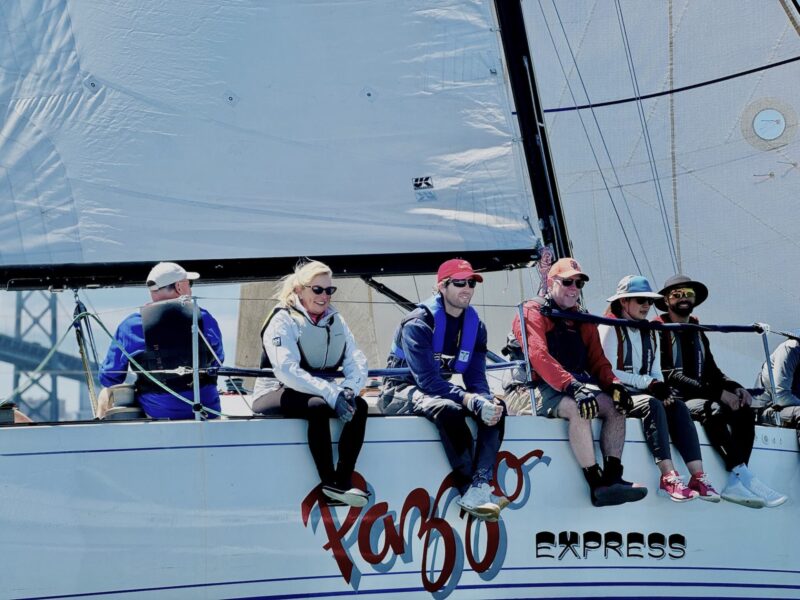
Spinnaker Sailing San Francisco’s racing clinic aboard the Express 37 fleet was held late last month, under clear skies and light winds, with 24 students joining in the fun. Throughout the day the winds built to 20+ knots and the crews were all flying the spinnakers under the watchful eye of each boat’s regular crew.
“Everyone had a ball and the takeaway was huge. Every participant said they were stoked to go racing, and all four host boats walked away with many potential crew contacts.”
It’s great to see Spinnaker Sailing partnering with the Express 37 fleet to encourage a new pool of racing sailors. If your sailboat class needs more crew, or if you want to crew on a boat, you can also check out the Latitude 38 Crew List pages, where there’s someone for everyone!
Discover Bair Island Marina
Discover one of the most exclusive marinas in the Bay Area featuring a host of resort-style amenities. Schedule a tour today.

